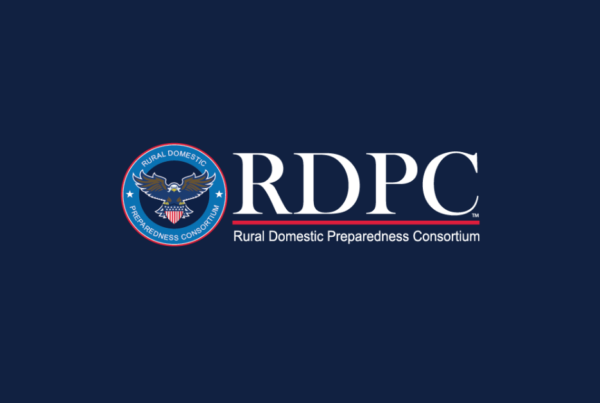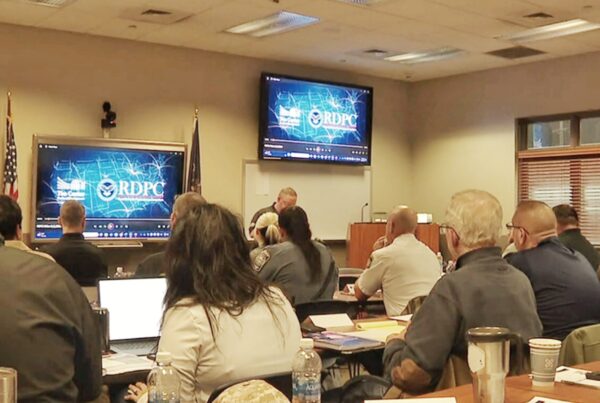 Law enforcement agencies and officers across the nation save lives and do their jobs more safely and effectively thanks to vehicles, equipment, weapons, and supplies obtained at no cost through the Federal Surplus Property Program.
Law enforcement agencies and officers across the nation save lives and do their jobs more safely and effectively thanks to vehicles, equipment, weapons, and supplies obtained at no cost through the Federal Surplus Property Program.
Three such agencies will be recognized as “Success Stories of the Year” by the federal Law Enforcement Support Office (LESO) at the upcoming 2011 LESO National Conference, set for March 15-17 in San Antonio, Texas.
Chosen to receive such distinction are the Metro Nashville, Tenn. Police Department, the Wilson County, Kan. Sherriff’s Department, and the Drug Enforcement Administration Los Angeles Field Division.
These three law enforcement organizations were selected from among nearly 18,000 participating agencies from across the nation that are utilizing surplus federal property.
Lonnie Lawson, president and CEO of The Center for Rural Development, will be on hand to help present these agencies their national awards in recognition of their successful use of equipment and supplies obtained through the Federal Surplus Property Program in critical incidents.
The Center operates the National Law Enforcement Corrections and Technology Center (NLECTC) Small, Rural, Tribal and Border Regional Center (SRTB-RC), an organization that provides responsive solutions and practical benefits to small and rural law enforcement agencies, and acts as a one-stop-shop for free technical assistance and access to other National Institute of Justice (NIJ) Centers for nearly 17,000 small, rural, tribal, and border agencies across the nation.
SRTB-RC also features the nation’s only liaison between law enforcement organizations and the Federal Surplus Property Program—Charlie Brune.
“We are honored to have a hand in recognizing these agencies for their use of surplus equipment in a way that clearly resulted in the saving of lives,” Lawson said. “We’re also very proud our staff features Charlie Brune, who helps agencies get connected with these opportunities and leads them through the process from enrollment to the successful receipt of critical equipment.”
These federal programs include the 1033 Program, which permits U.S. Secretary of Defense to transfer, without charge, excess U.S. Department of Defense personal property to state and local law enforcement agencies.
The 1033 Program allows law enforcement agencies to acquire vehicles (land, air and sea), weapons, computer equipment, body armor, fingerprint equipment, night vision equipment, radios and televisions, first aid equipment, tents and sleeping bags, photographic equipment, and more.
Also included is the 1122 Program, which allows state and local governments to purchase new law enforcement equipment—particularly high-tech items and newer technologies—for counter-drug activities directly through the federal government. The program allows federal discounts from large-volume purchases to be passed on to state and local law enforcement agencies.
In January 2011 alone, the value of the property transferred from the Department of Defense to various law enforcement agencies throughout the United States totaled $22.3 million.
Brune, who served 37 years in law enforcement including time as a Texas Ranger, said these programs carry even more importance in times of economic hardship. As testament to that, Brune said he responded in January to 34 separate requests for information or assistance from agencies across the nation.
“There are many agencies that are in desperate need of equipment for their officers due to extremely tight or non-existent budgets,” Brune said. “These agencies are unable to furnish these officers with such basic equipment as rifles, shotguns, and night vision gear.
“With the stand-down in Iraq, a large amount of serviceable equipment is being returned to the United States,” he added, “which in the hands of a well-trained law enforcement officer, could provide that officer with an advantage over the criminal element or at least put the officer on equal footing.”
Dave Mather, SRTB-RC executive director, agreed.
“We get the benefit of helping police officers get free access to government surplus equipment, and law enforcement benefits from this equipment in immeasurable ways,” Mather said. “And having someone on staff like Charlie, who knows the system inside and out, allows us to help these agencies acquire this much-needed equipment at virtually no cost.
“It’s a win-win for everybody,” Mather said.
Excerpts from the award letters on each winner are as follows:
- Metro Nashville, Tenn. Police Department – In May 2010, record rainfalls descended on Nashville and the entire state. On a single day, more than seven and one-quarter inches fell, causing the city to experience devastating and historic flooding. The Metro Nashville Police Department reutilized excess Department of Defense property, which properly equipped them to respond to this situation. “This 1033 Program provided equipment, in the hands of your capable officers, that resulted in a rapid and then tireless response, protecting and ultimately saving countless lives,” wrote LESO Director C.A. Barnett.
- Wilson County, Kan. Sheriff’s Department – On Oct. 7, 2010, a deputy responded to a call from a female motorist, who stated she thought her car had been hit by a bullet while driving down the highway. Once on scene, the deputy approached a car he thought to be the motorist, but unbeknownst to the deputy, then driver was actually the perpetrator of the earlier shooting. The driver drew and pointed a weapon at the deputy, and the situation became an armed confrontation between the driver and Wilson County deputies. “Thanks to one of the weapons provided to us through the LESO 1033 Program, my deputy and the other officers involved in the situation were able to go home safely to their families,” wrote Sheriff Dan Bath of the Wilson County Sheriff’s Department.
- Drug Enforcement Administration Los Angeles Field Division – In August 2010, a DEA agent, Los Angeles Field Division, approached a vehicular accident outside of El Paso, Texas. A civilian motorist had a rear-tire blowout which resulted in a high-speed rollover. Two passengers were thrown from the vehicle and two passengers remained inside the vehicle. A special agent triaged each passenger and began treating the most seriously injured, a woman with a seven-inch gaping neck wound. This agent had reutilized excess Department of Defense property—a live-savings bag that included QuickClot Combat Gauze and a cervical collar—which were used to provide aid to the seriously injured passenger. This equipment and the agent’s quick response saved the woman’s life.
For more information on the 1033 and 1122 programs, contact Charlie Brune, SRTB-RC Law Enforcement Project Manager, Federal Surplus Property Program, at (512) 445-2316, via cell at (512) 826-9660, or email at cbrune@txsheriffs.org.
Funded through a cooperative agreement between the U.S. Department of Justice, Office of Justice Programs, National Institute for Justice, National Law Enforcement and Corrections Technology Center, and The Center for Rural Development, SRTB-RC serves as an honest broker providing responsive solutions and practical benefits to small and rural law enforcement agencies and acting as a one-stop-shop for free technical assistance and access to other NIJ Centers for nearly 17,000 small, rural, tribal, and border agencies across the nation through innovative, collaborative cooperation.
For more information on SRTB-RC and its programs, contact Executive Director Dave Mather at 606-677-6000, or visit www.srtbrc.org.




